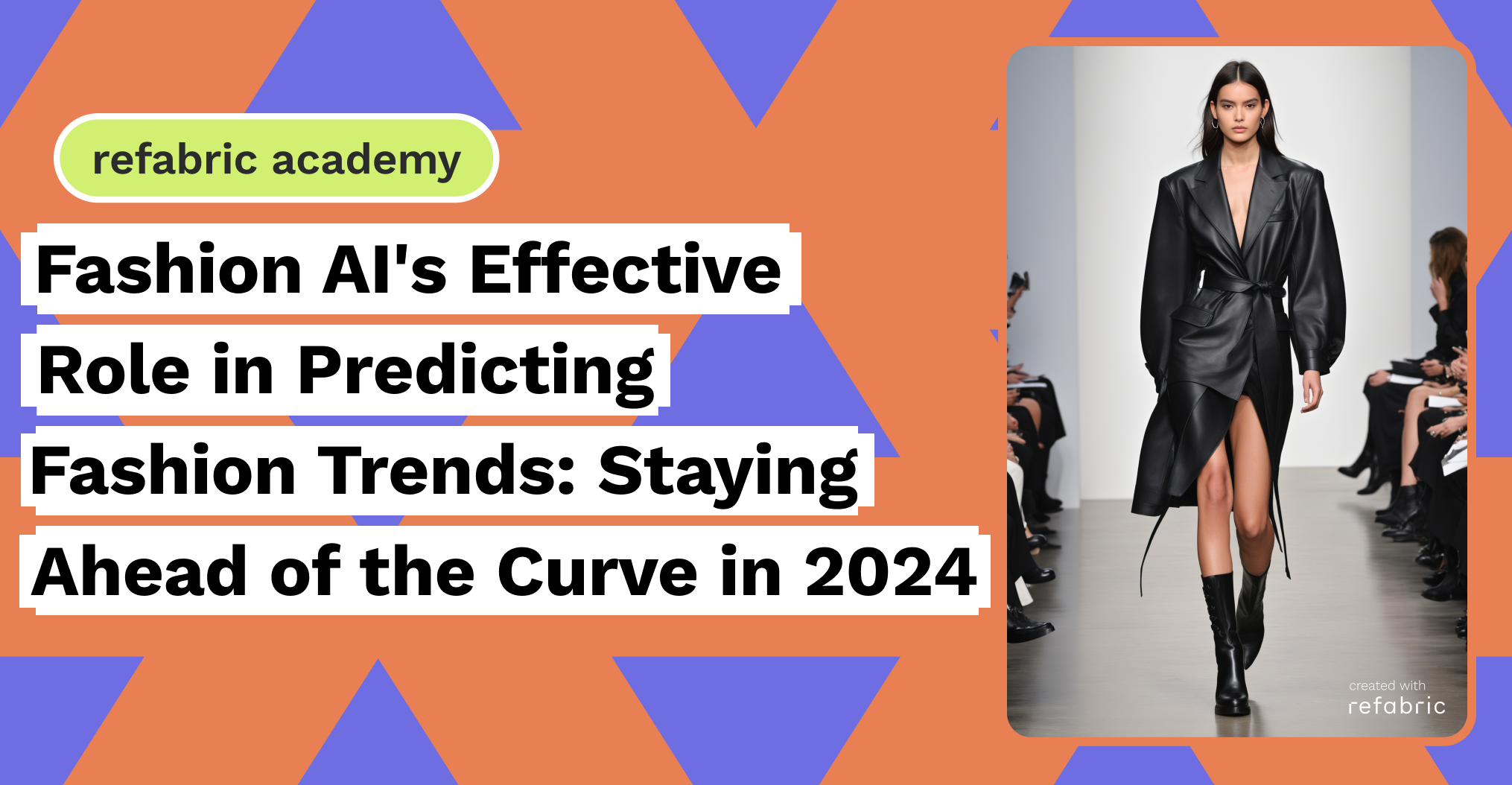Fashion AI is redefining how trends are predicted, offering brands an unprecedented ability to stay ahead of the curve and meet consumer demand with precision. In the fast-paced world of fashion, predicting trends has always been a blend of art and science. Traditionally, designers and brands relied on instinct, experience, and cultural observations to forecast what styles would captivate consumers in upcoming seasons. However, in 2024, the game has changed dramatically. The advent of artificial intelligence (AI) is revolutionizing trend prediction, offering brands an unprecedented ability to stay ahead of the curve and meet consumer demand with precision.
The Shift from Instinct to Data-Driven Decisions
AI’s integration into fashion trend prediction marks a significant shift from subjective decision-making to data-driven strategies. Fashion brands are increasingly leveraging fashion AI to analyze vast amounts of data, including consumer behavior, social media trends, and even global events. This data is then processed by machine learning algorithms that can identify patterns and predict what styles, colors, and materials will be in demand.
For instance, fashion AI can analyze millions of social media posts and images to detect emerging fashion trends in real-time. Platforms like Instagram and TikTok are goldmines of fashion inspiration, where influencers and everyday users alike showcase their style choices. By analyzing this content, AI can identify which trends are gaining traction and provide brands with actionable insights. This allows companies to create collections that resonate with consumers’ evolving tastes, rather than relying solely on designers’ creative hunches.
Understanding Consumer Behavior on a Deeper Level
One of the most compelling advantages of fashion AI in trend prediction is its ability to understand consumer behavior on a granular level. Through techniques like sentiment analysis and natural language processing (NLP), AI can gauge public sentiment towards specific styles or brands. This means that fashion companies can not only predict what will be popular but also why it will be popular.
For example, AI can analyze online reviews, social media comments, and even search engine queries to understand consumers’ preferences and pain points. This data helps brands tailor their offerings to meet specific consumer desires, such as sustainable materials, inclusive sizing, or multifunctional designs. As a result, companies can make more informed decisions about product development, marketing, and distribution, ultimately leading to higher customer satisfaction and brand loyalty.
The Role of Fashion AI in Reducing Waste
In an industry often criticized for its environmental impact, AI-driven trend prediction offers a promising solution to reduce waste. By accurately forecasting demand, fashion brands can produce the right amount of inventory, minimizing the risk of overproduction. This is particularly important in the age of fast fashion, where excess stock often leads to significant waste.
AI can also help brands make more sustainable choices by analyzing data related to materials, production processes, and consumer preferences for eco-friendly products. For example, AI can predict which sustainable fabrics will be popular in upcoming seasons, enabling brands to source materials more effectively and reduce their environmental footprint.
Moreover, AI’s ability to track and analyze consumer behavior can encourage the adoption of more sustainable practices among consumers. By promoting trends that align with ethical fashion principles, such as upcycling or slow fashion, AI can influence consumer behavior towards more responsible purchasing decisions.
Staying Competitive in a Rapidly Changing Market
In 2024, the fashion industry is more competitive than ever, with brands vying for consumers’ attention in an increasingly crowded marketplace. AI’s role in trend prediction is a key differentiator that can help brands stay ahead of their competitors. By leveraging AI, companies can not only anticipate trends but also respond to them more quickly than ever before.
For instance, AI can enable real-time adjustments to marketing strategies, allowing brands to capitalize on emerging trends as they happen. This agility is crucial in a world where trends can go viral overnight, thanks to the power of social media. Brands that can swiftly adapt to these changes are more likely to capture the attention of trend-conscious consumers and establish themselves as leaders in the industry.
The Future of Fashion AI in Trend Prediction
As fashion AI technology continues to evolve, its role in fashion trend prediction will only become more sophisticated. In the near future, we can expect AI to not only predict trends but also to create them. Generative AI models, which can design new fashion concepts based on data inputs, are already being explored by forward-thinking brands. These models could eventually lead to a new era of AI-driven creativity, where the line between human and machine-generated fashion becomes increasingly blurred.
In conclusion, AI is transforming the way fashion trends are predicted, offering brands a powerful tool to stay ahead of the curve in 2024. By leveraging data-driven insights, understanding consumer behavior on a deeper level, reducing waste, and staying competitive in a rapidly changing market, fashion AI is not just predicting the future of fashion—it’s shaping it. As the industry continues to embrace this technology, the possibilities for innovation are endless, promising a future where fashion is more responsive, sustainable, and aligned with consumer desires than ever before.
